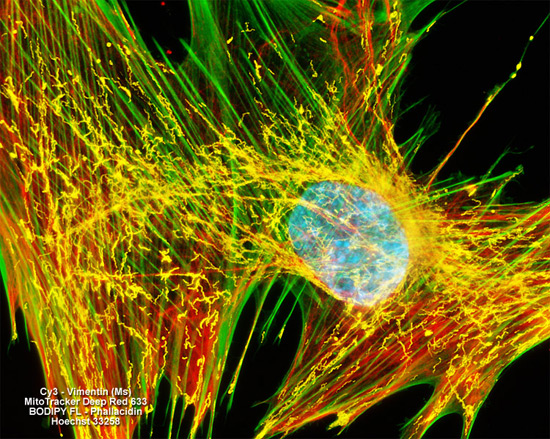The MRC-5 human lung cell line was initiated from fetal pulmonary tissue in the mid-1960s. The cells, which are capable of up to 46 population doublings before senescence, are valuable for transfections and vaccine production. The line is perhaps best known for its recent use as a cell substrate in the production of the smallpox vaccine.
Human Fetal Lung Fibroblast Cells

Intermediate filaments were immunofluorescently targeted in a culture of human lung cells (MRC-5 line) by treating the fixed and permeabilized cells with mouse anti-vimentin (porcine eye lens) primary antibodies followed by goat anti-mouse secondary antibodies (IgG) conjugated to Cy3. In addition, F-actin was visualized with BODIPY FL conjugated to phallacidin, a phallotoxin isolated from the death cap mushroom (Amanita phalloides). The mitochondrial network and nuclear DNA were simultaneously labeled using MitoTracker Deep Red 633 and Hoechst 33258, respectively. Images were recorded in grayscale with a Hamamatsu ORCA AG camera system coupled to a ZEISS Axio Imager microscope equipped with bandpass emission fluorescence filter optical blocks provided by Chroma and Semrock. During the processing stage, individual image channels were pseudocolored with RGB values corresponding to each of the fluorophore emission spectral profiles.



